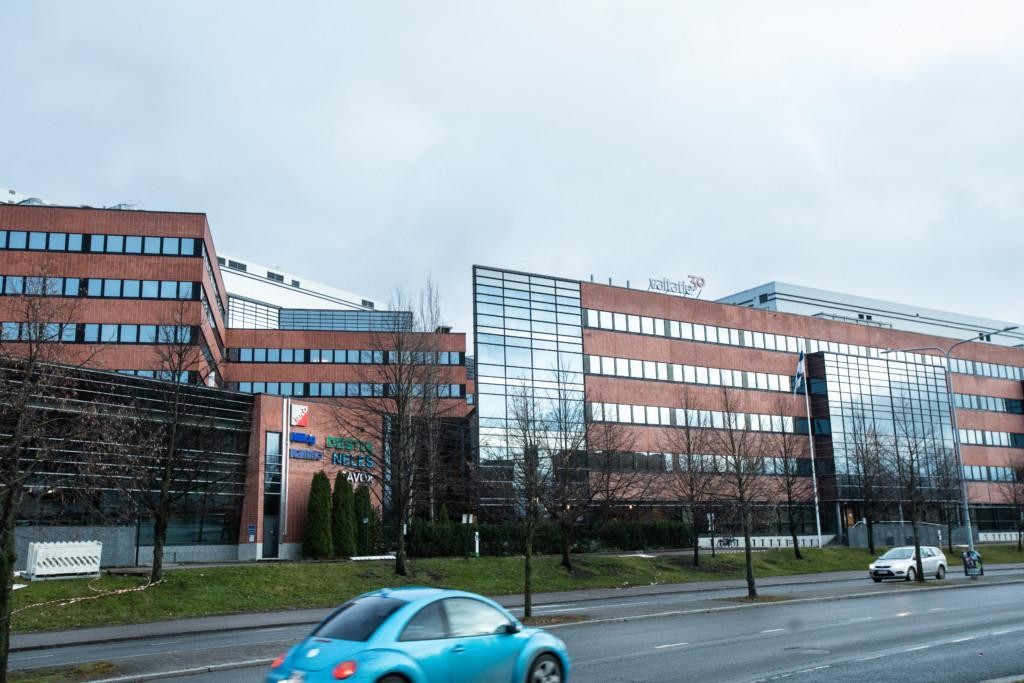From the beginning of 2022, the excess heat produced from cooling the data centers at Hatanpään Valtatie 30 will be directed into the district heating network. Heat pumps are a necessary tool in turning excess heat into renewable energy in order to achieve common carbon neutrality goals.

At the beginning of 2022, the Castellum-owned Hatanpään Valtatie 30 will see six large heat pumps roar into action as they turn the excess heat from the data centers of the tenant, Nokia’s R&D vLab, into renewable energy suitable for Tampere’s district heating.
“It is really great that energy companies are excited about utilizing excess heat. The district heating networks in Finland are all owned by energy companies, and that’s why the decisions they make have such a big effect on how ‘cleanly’ we are able to heat our cities”, Oilon’s Sales Manager, Jussi Alpua, says.
Tampereen Sähkölaitos’ district heating network provides heat for approximately 6000 properties or 250 000 residents in Tampere and the surrounding areas. The heat pumps at Valtatie 30 will produce about 50 gigawatt hours of heat every year.
“That is about 2.5 percent of our heat requirements. The excess heat from the data center will be able to heat 50 apartment buildings per year, that’s a significant heat source for the district heating network”, says Pekka Leinonen, Head of B2B Sales & Customer Relationship Manager at Tampereen Sähkölaitos.
Own connection brings efficiency to district heating sales
Castellum is installing six Oilon ChillHeat industrial heat pumps at the Valtatie 30 property. The pumps will be able to cool the data center and transfer the heat produced by the electricity used at the data center to the district heating network.
“Data centers provide the perfect environment for heat recovery for the district heating network due to the fact that the excess heat has a high temperature and is available year round.” Oilon’s Alpua explains.
Tampereen Sähkölaitos has built a separate connection for the water coming from Valtatie 30. Once the pumps have heated the water to the 95-degree temperature suitable for district heating, the water is then transferred to the main network and from there onwards to serve the needs of customers.
“Due to the large volume of water, we decided together with the customer to have a larger district heating pipe built. In this way we can use the entire capacity of the pumps and our customer doesn’t lose any of the heat produced”, Leinonen says.
Transferral of the heat to the district heating network will begin in late spring 2022 when the construction work is completed.
Pumping towards joint carbon neutrality
The goal of the EU is to be carbon neutral by 2050; Finland in turn aims to be carbon neutral by 2035. The goals of many cities and energy companies are even more ambitious. Castellum, the owner of the property at Valtatie 30, has set itself the goal of carbon neutrality by 2030.
To achieve these goals heating with fossil fuels has to be replaced more and more by renewable energy sources.
“In the near future, we have to be able to utilize excess heat more efficiently. Heat pumps are an efficient solution because they can produce heat much more efficiently when compared to direct electric heating”, Alpua says.
District heating is the most used method of heating in Finland. Roughly 35% of district heating is produced from fossil fuels. The excess heat from Valtatie 30 replaces a significant amount of fossil fuels, such as gas.
Excess heat recovery and transferral to the district heating network is likely a pertinent question in any city using district heating. The bigger the need to reduce fossil fuel use, the more interesting excess heat recovery becomes”, Leinonen says.
Oilon responds to the pump boom with a new factory in Kokkola
“We are in the middle of a heat pump boom. Previously, the most important motive in investments was money, now it is also carbon neutrality, and the pumps support that”, Alpua sees.
In Finland and throughout the European Union, energy use is at a turning point. There has been a reduction in the use of nuclear energy in Europe, but at the same time, coal needs to be replaced by renewable and emission-free energy sources. This challenging equation has been seen during the fall as high energy prices for both companies and households alike.
Excess heat recovery is needed because heat needs to be produced with smaller and smaller amounts of electricity. In order to meet the growing demand for heat pumps, Oilon opened its new factory in Kokkola in November, which will quadruple its industrial heat pump production capacity. There are good prerequisites for the utilization of excess heat in Finland due to the functioning district heating networks in every suburb.
“Investments could be given a boost by a legislative proposal that would reduce the tax burden for energy companies producing energy with heat pumps for the district heating network”, Alpua concludes.
MORE INFORMATION:
Jussi Alpua
Sales Manager | Oilon
044 337 4475
jussi.alpua@oilon.com
Pekka Leinonen
Head of B2B Sales & Customer Relationship Manager | Tampereen Sähkölaitos
040 637 6683
pekka.leinonen@sahkolaitos.fi
